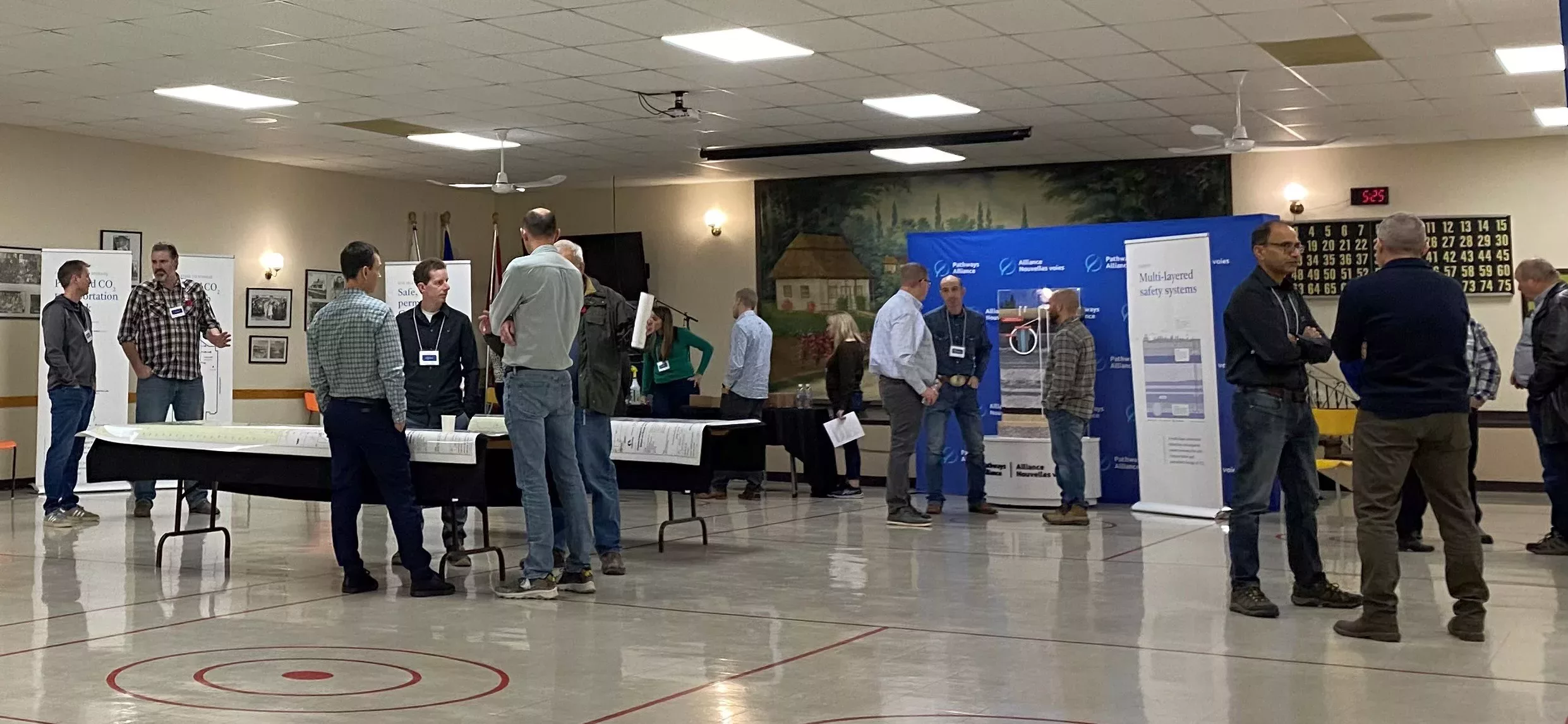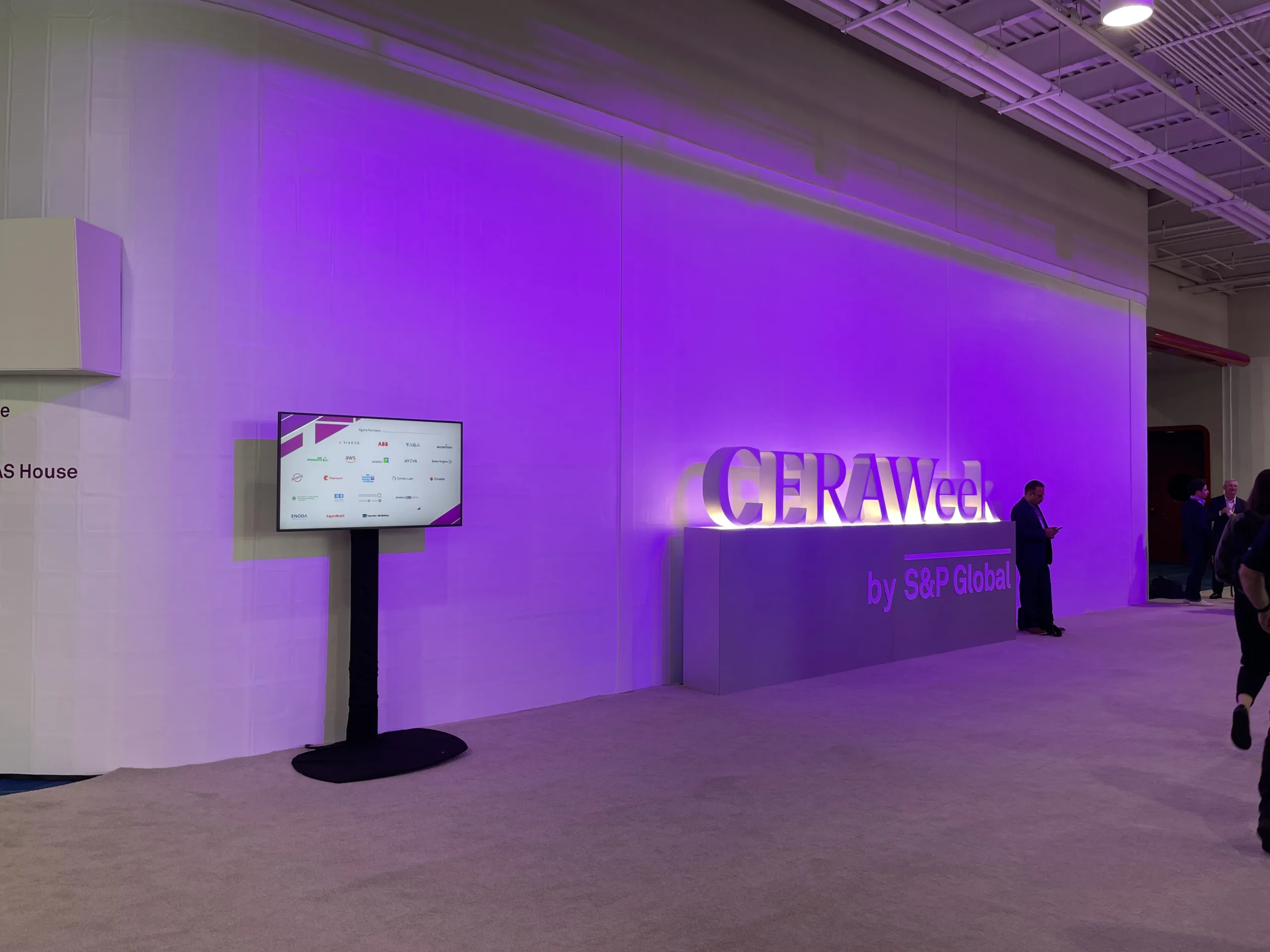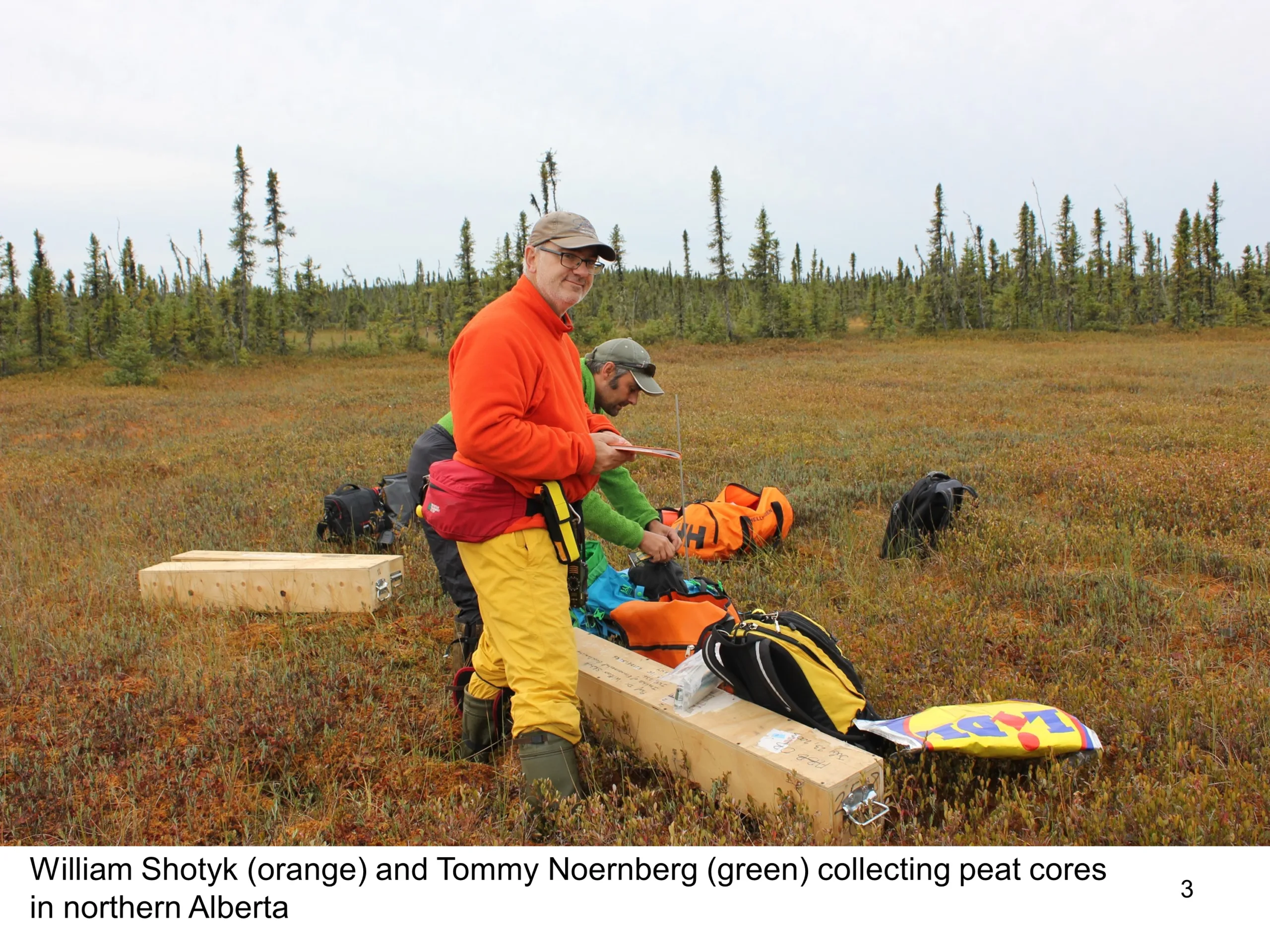Pathways Alliance holds community information sessions on proposed carbon capture network

Public sessions in Cold Lake, St. Paul and Glendon first of many to provide information, collect feedback from interested community members
More than 200 residents in three northeastern Alberta communities took time recently to speak directly to experts about the Pathways Alliance carbon capture and storage (CCS) network proposed in the region.
Engineers, scientists, geologists and other experts from the alliance of Canada’s six largest oil sands companies fielded a number of questions, including several on CO2 storage safety, groundwater protection and potential business opportunities, during project information sessions in Cold Lake, St. Paul and Glendon in late October and early November.
“There were many great conversations and some tough but fair questions about a technology that is new for the region,” said Pathways Alliance President Kendall Dilling.
“We fully understand why people living near any proposed major infrastructure project would want assurances that it will be constructed and operated safely.
“We hope people walked away with a better understanding of the project. This is just the beginning of a long ongoing dialogue with communities.”
Using interactive displays, models and maps, experts provided insight and technical information about CCS technology, the CO2 capture process planned for multiple oil sands facilities, a 400-kilometre CO2 transportation line and the deep underground CO2 storage hub planned in the region. A station was also set up to provide specific information about the project’s multi-layered safety system and protocols.
While CCS is new to the region, it is not a new technology for the province or the world. With more than 50 years of scientific and technological innovation, carbon capture and storage is a safe and proven technology that is critical to reaching global climate change goals. Alberta is the perfect place to implement this technology at scale. We have the ideal geology for carbon storage, world-class regulatory oversight, and a highly experienced industry. The Quest Carbon Capture and Storage facility in northern Alberta has been demonstrating that large-scale CO2 capture is a safe and effective way to reduce CO2 emissions from industrial sources since 2012. Between 2015 and 2021, the Quest facility captured and safely stored six million tonnes of CO2. This is the equivalent to removing ~1.3 million cars off the road. Dilling said he hoped many residents left with a better understanding about why this project – one of many CCS projects proposed for Alberta – is necessary.
“Alberta has long benefitted from a strong energy sector that generates thousands of jobs and helps fund essential services, including health care, education and roads,” said Dilling. “To keep these benefits for decades to come, we must continue raising the bar to protect the environment by reducing emissions and help our country achieve a sustainable future.”
The CCS network is foundational to the Pathways Alliance ambitious plan and its goal to reduce emissions from operations by 22 million tonnes per year by 2030 and its ultimate goal to achieve net zero emissions from operations by 2050. Learn more at pathwaysalliance.ca
Here are answers to some of the more common questions asked at the information sessions.
How do you know the CO2 will stay underground permanently?
Alberta’s Basal Cambrian Sandstone (BCS) formation is ideal for CO2 storage. The BCS is a deep, porous geological layer that can contain CO2, and is located underneath many layers of impermeable rock salt formations that act as natural seals. The CO2 is stored as a liquid, which is less mobile than gas. It enters the tiny pore spaces in the sandstone storage layer and stays there permanently. Over time, stored CO2 tends to become even less mobile. Once CO2 is underground, seismic imaging shows how it is distributed through the storage layer. It also monitors rock levels above the storage layer to confirm CO2 is not moving upward.
My local business is interested in working with the Pathways Alliance, how can we do so?
The goal of our industry is for local Indigenous communities and businesses to share in our success and for communities to prosper and be strengthened through engagement in the opportunities natural resource development provides. Interested contractors, supplies and vendors should visit the business registration portal on the Pathways Alliance website to be considered for future work.
Will the CO2 have negative impacts on ground water in the area?
The captured CO2 is stored 1 to 2 km below the earth’s surface. By comparison, fresh water aquifers in this area are typically around 100 to 200 m below the surface. This depth of the BCS where the CO2 will be stored is well below any fresh water sources with many impermeable barriers in between. Comprehensive monitoring will also be used to ensure the stored CO2 remains in place.


